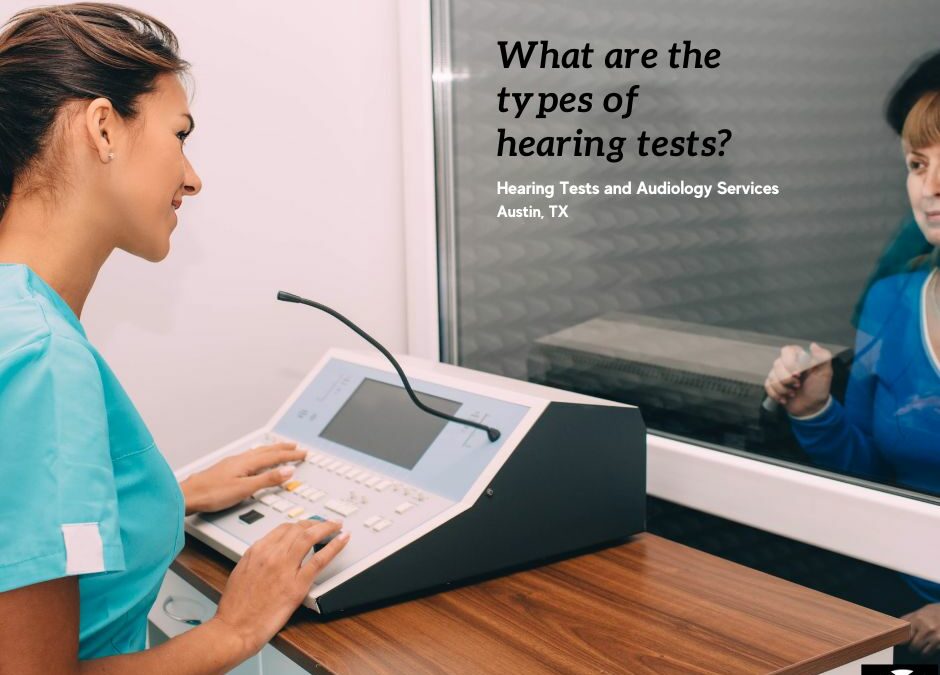After hearing your family members or friends bug you about the television volume for the nth time, you’re now considering seeking professional help. An audiologist will provide hearing tests to diagnose and validate the nature and severity of your hearing loss.
Hearing tests are risk-free and comfortable and provide a baseline for your current hearing thresholds. The results are plotted on an audiogram, a visual representation to easily understand your current hearing capabilities.
Types of Hearing Tests
1. Otoacoustic Emissions (OAEs)
OAEs are sounds produced by hair cell vibrations in the cochlea of the inner ear. This form of examination employs a microscopic probe equipped with a speaker and microphone to trigger the cochlea and evaluate its response.
People with normal hearing will emit sound; those with hearing loss of more than 25 to 30 dB will not. This test helps identify if there is an obstruction in the ear canal, abnormal fluid levels in the middle ear, or damage to the cochlear hair cells.
OAE testing is also an integral part of hearing screening programs for newborns.
2. Auditory Brainstem Response (ABR)
ABR is used to determine the presence of sensorineural hearing loss (SNHL). This type of hearing loss manifests when there is an issue in the inner ear or with how the hearing nerve works.
Auditory Brainstem Response is used for neonatal hearing screenings. In an ABR examination, electrodes are connected to your skull, scalp, or earlobes, and headphones are provided. Your brainwave activity in reaction to noises of differing intensities is measured.
3. Acoustic Reflex Testing
This hearing test focuses on the involuntary muscle contractions of the middle ear. Through acoustic reflex testing, it is possible to pinpoint the source of the hearing problem, whether it is in the auditory nerve, cochlea, or ossicles.
4. Tympanometry
This type of acoustic evaluation is directed toward the middle ear, eardrum, and conduction bones. By creating variations of air pressure in the ear canal, audiologists can use tympanometry as an objective test of general middle-ear function.
The results gathered from this procedure provide additional needed information and dovetail with the results of other hearing tests for easier and more accurate diagnosis.
5. Speech Testing
This test is intended to determine the speech reception threshold (SRT), otherwise known as the quietest speech you can understand 50% of the time. It also assesses your ability to distinguish speech from ambient noise.
Speech testing or speech audiometry results provide important information as part of a comprehensive hearing evaluation. While other types of hearing tests directly evaluate hearing abilities, speech testing focuses on comprehension abilities.
6. Bone Conduction Testing
Through bone conduction testing, sounds will be sent through a specialized device. The gentle vibrations emitted during this test will directly stimulate the cochlea or inner ear, bypassing the middle and outer ear, and provide information about the nature and location of your hearing difficulties
This type of hearing test will allow audiologists to measure how well you can hear and help detect any issues with your middle and outer ear.
7. Pure Tone Testing
Also referred to as pure tone audiometry, this hearing test utilizes air conduction to evaluate your ability to hear sounds of varying pitches and intensities.
Various sounds (beeps and tones) will be transmitted through a specialized pair of headphones. You will be asked to respond by clicking a button or raising your hand whenever you hear a tone. The results will then be presented on an audiogram.
Hearing Tests in Austin, TX
RK Audiology provides a wide selection of hearing tests in South Austin, TX, and nearby locations.
Don’t wait until it’s too late – schedule your hearing appointment today!

